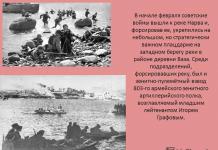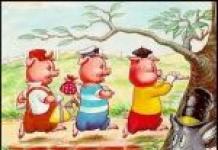Why do we need to partake of the Body and Blood of Christ on Maundy Thursday?
Our Lord Jesus Christ himself answers this question with utmost clarity in the sixth chapter of the Gospel of John.
Verse 53: “Jesus said to them, “Truly, truly, I say to you, unless you eat the flesh of the Son of man and drink his blood, you have no life in you.”
Verse 54: “Whoever eats My flesh and drinks My blood has eternal life, and I will raise Him up at the last day.”
Verse 56: “He who eats My Flesh and drinks My Blood abides in Me, and I in him.”
That is, at the Last Supper, which took place less than a day before the death of Christ, a great miracle unheard of in human history took place. God gave us His Body and Blood so that the Holy Mysteries would become the main means of our salvation.
You can’t say better about what these Holy Mysteries are than the Fathers of the Church. They realized with reverent horror that the Body and Blood of Christ is the greatest shrine, from which not only we should tremble, but seraphim and cherubim tremble from it.
The Body and Blood of Christ is an absolutely new reality. In it, God united with man so that man could unite with God. Why is this Sacrament called the Sacrament of Communion? Because in it we become partakers of the Divine.
Saint John Chrysostom in his work “On the Priesthood” wrote about the Eucharist: “The priest stands, sending down not fire, but the Holy Spirit;
makes a long prayer not for fire to fall from above and burn what was offered, but for Grace, descending on the Sacrifice, to ignite the souls of all through it and make them brighter than silver purified by fire. Who, other than a completely frenzied or insane person, can despise such a terrible sacrament? Or don’t you know that human souls could never endure the fire of this sacrifice, but would all completely perish if there were not the great help of Divine grace?”
What conclusion can we draw from the above Gospel quotes?
The Body and Blood of Christ is life for us. He who does not partake of the Holy Mysteries has no life in himself. It does not have this rebirth-resurrection in Christ. This is the immutable law of existence established by our Lord Jesus Christ. This law cannot be crossed or circumvented.
And sometimes it’s scary that a person voluntarily deprives himself of the Cup, preferring to It and the heavenly life associated with It, leading to heaven, over carnal life for the pleasures of the body, leading to hell.
Saint Basil the Great said that the end of fulfilling God's commandment is eternal life, and the end of breaking God's commandment is, accordingly, eternal death.
The words of the Savior “Unless you eat the Flesh of the Son of Man and drink His Blood, you will not have life in you” is the commandment of God. This is confirmed by the previous phrase that came from the mouth of Christ: “Truly, truly, I say to you.” It is truth. And it is very important to understand it.
The Body and Blood of Christ is life for us. Whoever worthily partakes of the Holy Mysteries of Christ has eternal life within himself and becomes, as stated in the 9th ode of the Canon for Holy Communion, Your home. Because “He who eats My Flesh and drinks My Blood abides in Me, and I in him.” God enters the soul and dwells in it. This is how the heavenly union of God and man is restored.
That is why it is always sad when people receive communion rarely or do not receive communion at all. They do not observe Maundy Thursday, but Maundy Thursday, they try not to attend church services, not to be accomplices and communicants in the Sacrament of the Eucharist, but to wash their bodies and cleanse their house on this day. But this is an indicator. “For where your treasure is, there your heart will be also” (Matthew 6:21). And that means it is not in the heart and in the temple, but in the body and in the house.
But you can’t wash your soul with soap and shampoo. It requires confession and the Eucharist.
Here's the rub...
The holiday Maundy Thursday 2018 is a day of cleansing not only the soul, but also the body. What events is this day associated with, what church rituals are observed on Maundy Thursday.
Maundy Thursday 2018: what date?
The Great Holy Week, which this year lasts from April 2 to April 7, is the last week before Easter 2018. It is during this week that all days are called Passionate or Great, each of them is dedicated to certain events associated with the last period of Jesus Christ’s stay among people.
Maundy (Clean) Thursday falls on April 5 in 2018.
What church rituals, folk traditions and customs are associated with this day?
Maundy Thursday 2018: rituals and church services
Starting from Maundy Thursday until Easter Sunday, all churches and Orthodox churches hold services dedicated to the passionate events that Jesus Christ experienced on this day more than two thousand years ago.
In the evening of Maundy Thursday, they perform the Matins of Good Friday or the service of Maundy Thursday - the Twelve Gospels, which remembers the saving suffering and death on the cross of the Son of God. Many believers confess and receive communion during services.
Also on Maundy Thursday, the Last Supper is remembered during church services. It was on this day that Jesus Christ established the ritual of the Eucharist - Holy Communion, which consists in the fact that believers eat wine and bread, meaning by them the Body and Blood of Jesus Christ.
During the Last Supper, Jesus washed the feet of his disciples, symbolizing brotherly love and humility. Some temples also perform this ritual. The bishop, like Jesus did, washes the feet of the priests.
On Maundy Thursday, the Patriarch blesses aromatic church oil with myrrh, which is then distributed to all dioceses and parishes. Through the rite of confirmation, Christians receive the blessing of the Holy Spirit.
On Maundy Thursday, a special Thursday candle is lit in churches, symbolizing people's great love for the Savior. At the end of the service, believers try to bring this light home without extinguishing it along the way. At home, all corners of the house are illuminated with the flame of a Thursday candle to drive away trouble and evil spirits, and they are placed in front of the icons.
Maundy Thursday - ablution customs
On the last Thursday of Lent, special attention should be paid to the cleanliness of your own body. It is believed that water on this day has truly magical properties.
Throughout Lent, people cleansed their souls, and the ritual of cleansing the body was carried out on Thursday of Great Week. It has long been customary to get up very early on this day, before sunrise, and swim in an open body of water - a river or lake. People believed that along with the sun's rays, good and pure thoughts would flow into a cleansed body, and that during the year illnesses would be avoided.
Maiden love magic is also associated with the ritual of ablution on Maundy Thursday. A girl who manages to take a dip or at least wash her face in running water before sunrise will be beautiful and loved all year.
Maundy Thursday - preparation for Easter
On this day, people try to finish putting their house, garden and yard in order so that they don’t have to do any more dirty work before Easter.
General cleaning is carried out, a large wash is carried out and the entire surrounding space is cleared of accumulated rubbish and debris.
On Maundy Thursday, housewives also begin preparing for the Easter table: they prepare snacks, bake Easter cakes, and paint eggs.
We are in youtube in social networks
Great Maundy Thursday in Orthodoxy is the fourth day of Passion Week, which comes before the celebration of Easter (Bright Resurrection of the Savior). In 2019, the date of this church event will be April 25th.
What is Maundy Thursday for Orthodox Christians?
Maundy Thursday is usually considered a temporary Christian custom. This day is dedicated to the Last Supper, where Christ and his disciples had their last meal. Here the Son of God personally gave consecrated bread and wine to the apostles, allowing them to touch the Creator.
Last Supper
A divine service with hymns and reading of the Holy Scriptures takes place within the church walls. On this day, believers mentally take part in biblical events, approaching the knowledge of God.
About the other days of Holy Week:
Believers who are in a special mood of spirit and come to worship services, as well as clergy, experience this grandiose moment in the life of the Savior. On Maundy Thursday there is a large increase in Christian ascetics in the walls of churches.
Important! The Sacrament of Communion is one of the main events in the life of a religious ascetic. It is the moment of union of the individual soul and God. On Maundy Thursday, the ritual of communion has the deepest benefits for a person.
Maundy Thursday Prayers
The liturgy has some peculiarities: both parishioners and priests sing a specific prayer before communion. In large churches, the ritual of foot washing is carried out, where the bishop, imitating the activity of Christ, washes the feet of church servants.
 On a note! At the Last Supper, a significant event occurred, which is called the rite of the Eucharist. The term translated means “good” or “reverence.” The ritual consists of consecrating pieces of bread and vessels with wine with a special prayer. By eating such divine food, Orthodox believers have the opportunity to join the Body of the Lord and find a better life.
On a note! At the Last Supper, a significant event occurred, which is called the rite of the Eucharist. The term translated means “good” or “reverence.” The ritual consists of consecrating pieces of bread and vessels with wine with a special prayer. By eating such divine food, Orthodox believers have the opportunity to join the Body of the Lord and find a better life. Continuation of ministries
The liturgy, named after St. Basil the Great, is combined on Maundy Thursday with Vespers, so the ancient custom allowed its reading only in the afternoon. This divine service is the “conductor” of those present to the main theme, and the stichera “Lord, I cried” condemn the fall of Judas.
Next, the clergy read three proverbs: about the dialogue between the people of Israel and God; about the conversation between the Creator and Job; about prophecies that speak about the passion of Christ. These parts significantly lead those present to the theme of the Last Supper.
- In Exodus, Christians notice that God's people already stood in fear of the decision of the Most High Creator. On Maundy Thursday, He himself condescended and distributed the Body and Blood to his beloved disciples.
- The text about Job says that God personally appeared to him. All the doubts of this righteous man were dispelled after he heeded the words of the Heavenly Father.
- The third proverb is a prophecy of Isaiah that includes details of the suffering on the cross. The power of the Messiah lies in the fact that He always loved even his enemies and did not respond to insults and humiliation.
- After this, they read the Gospel, where they choose stories that include the background and consequences of the Last Supper. At the dismissal of the liturgy, the prayer behind the pulpit is read and the ritual of washing the feet is performed. Simultaneously with the action, the Gospel of John is sung.
 Foot washing ceremony
Foot washing ceremony
Permissions and prohibitions
According to Russian custom, many things need to be done on this day. And at the same time, according to the Orthodox canons, one must not forget about the soul and repentance, because Maundy (Holy) Thursday is dedicated to the Last Supper, during which Christ performed the ritual that we call Holy Communion.
And today the site will tell you what it is customary to do on Maundy Thursday and how to spend this day with benefit for your soul, body and business.
Bathing and haircut
On Maundy Thursday, it is customary to get up very early, before dawn, and the first thing to do is cleanse the body - take a bath or shower. This is done in memory of how Christ washed the feet of his disciples at the Last Supper. In addition, it is believed that water on this day cleanses not only from dirt, but also from sins, and from bad intentions, and from possible diseases. Therefore, while bathing, thoughts should be bright, then bathing will have a beneficial effect on health, psychological mood, and spiritual development of the individual.
On Maundy Thursday, many people not only wash themselves, but also get their hair cut. There is a belief that ailments, evil eyes and evil go away with the cut strands. In the old days, it was on this day that mothers cut their babies’ hair for the first time, so that damage would not stick to them, and so that the hair would be soft and healthy.
Confession and Communion
On Great (Pure, Passionate) Thursday, believers, after washing, go to church, where they perform Matins, confess and receive communion. This is necessary in order to get rid of the burden of sins and cleanse yourself, and also to remember how Christ at the Last Supper broke bread and called it his body, and wine his blood. In memory of this, the clergy give parishioners prosphora and a sip of Cahors at communion.
By the way, according to some reports, on Maundy Thursday even those who usually avoid these traditional rites come to confession and communion. The fact is that, carried out on this particular day, they have enormous cleansing power, and you can pray away a serious (but not mortal) sin.
The texts that the priests read at Matins contain mention not only of the beginning of the custom of the Eucharist (Holy Communion), but also of the betrayal of Judas, who, having already planned an atrocity, nevertheless took the bread offered by Jesus. It also says that even an inveterate criminal sooner or later turns to God with a prayer for forgiveness.
These sacred troparia and narratives of the Last Supper are designed to awaken in parishioners humility and love for God, and also to show that Christ is merciful and merciful.
As a rule, believers on Holy Thursday, after Matins, Confession and Communion, return home, where they begin preparations for Easter. However, some remain for the liturgy.
Washing and cleaning
Maundy Thursday: traditions and customs
On Maundy Thursday they don’t even lend money, and they don’t share kitchen utensils with neighbors or relatives who live in another place. Previously, housewives preferred to stock up in advance on everything they might need, since they knew that on that day they would not be able to ask anyone about anything. True, following this tradition somehow does not fit with the mercy spoken of in church texts.
On Maundy Thursday there is also a big wash - housewives remove all textiles (curtains, bedspreads, bed linen) and wash them thoroughly. It is customary to wash rugs and featherbeds, beat out carpets and paths. Previously, all this was hung in the yard, and on the night of Good Friday the whole family slept on straw. This was not only a household necessity, but also a religious asceticism, because, according to the Gospel, on the last Friday before Easter, Christ accepted death on the cross, therefore, after Friday midnight, any excesses are unacceptable.
Easter cakes, curd Easter and Easter eggs
Maundy Thursday: traditions and customs
It is on Maundy Thursday that custom dictates baking Easter cakes, making Easter from cottage cheese and painting Easter eggs. This is done with prayer, with due humility and with bright thoughts. You can’t start cooking Easter cakes in a bad mood, otherwise the dough won’t rise, and the eggs will crack if you put them on the boil while being angry at someone or arguing with someone.
Previously, it was customary to bake a lot of Easter cakes to treat them not only to relatives, but also to neighbors, friends, and ordinary passers-by. In rich houses, Easter cakes and Easter eggs were donated to the temple, orphanages, almshouses, and all the servants in the house and workers were treated to them.
Nowadays, many also bake 15-20 Easter cakes in order to break the fast with the whole family, and leave holiday baked goods in the church, and also to simply exchange treats with those with whom they will celebrate Easter.
Thursday salt
In addition, Thursday (“black”) salt is prepared on Maundy Thursday. There are several cooking methods:
- In a cast-iron bowl, coarse salt is mixed with kvass grounds or black bread crumbs (then the salt must be wetted first), put in the oven and wait until the mixture turns into one very hard lump and turns black. After this, they break off pieces and pound in a mortar.
- This is the most suitable method for city housewives: simply heat coarse rock salt in a frying pan until dark, stirring constantly. By the way, there is a belief that if the salt begins to crack and “shoot” very strongly, it means that it is lying on the person who is “frying” it, or on his house.
The most important part of the strictest fast of the year - the Great Fast - is the last week before Easter. It was called Holy Week, since it was during this period that the suffering of Christ, the Son of God, occurred. Each day of the pre-Easter week has a special meaning and is designed to remind Christians of specific events of the past. On April 25, 2019, believers celebrate Great, otherwise Maundy Thursday.
Features of Maundy (Maundy) Thursday
The holiday of Maundy (Maundy) Thursday, of course, is not of a solemn nature. Moreover, Maundy Thursday is an invisible starting point. This date is considered the beginning of the most strict part of Lent and preparation for Easter.
On Maundy Thursday of Holy Week, the church remembers four gospel events that once took place on the mentioned day. This is about:
- The Last Supper (the last joint meal of Christ with the apostles), within the framework of which the Savior established the Eucharist - the New Testament sacrament of Holy Communion;
- the Lord's expression of love and meekness towards his disciples in the form of the latter washing his feet;
- Jesus offering prayer to His Father in the Garden of Gethsemane;
- betrayal of the Savior by Judas, who sold the Teacher for thirty pieces of silver.

The listed scenes from the life of Christ are woven into the services performed in Orthodox churches on Maundy Thursday. Thus, the liturgy of the latter directly marks the Last Supper in the Upper Room of Zion, and the believers present at it become symbolic participants in such an important action. Washing the feet as a sign of service and love for the apostles, by the way, is reflected in the modern church charter: it is on Maundy Thursday that the rite, named by analogy with the biblical event, is performed by the Patriarch in the main church of the country. In addition, this ritual is in practice carried out by the bishop in relation to priests in cathedrals and in some monasteries. The main events of the last days and hours of Jesus' life are contained in 12 passages from the Gospel.
What other features does the liturgy have on Maundy Thursday? This service is called the “Liturgy of St. Basil the Great” and is performed after Vespers, with the Eucharistic canon. Such a “full” liturgy is typical only for specific days of the year: in addition to Maundy Thursday, Holy Saturday, Christmas Eve, the holidays of Epiphany and the Nativity of Christ. In local churches, the primates bless the freshly brewed myrrh, and true believers Orthodox Christians try to take communion on this very day.
How it was?
Not everyone has read the Bible carefully or even read this great book, and therefore, to clarify, we should briefly highlight the events of Maundy Thursday that preceded the crucifixion of the Savior of mankind.
So, Jesus Christ retires with his disciples on the eve of his own suffering and execution in the Upper Room of Zion to have his last meal with them (only he knew about this). It begins with the previously mentioned washing of the feet: the Savior performs the rites that slaves traditionally performed in relation to their own master. The apostles are speechless when they see this, but they do not dare to stop the Teacher. Only Peter exclaims: “Lord! Should you wash my feet? And he receives the following answer: “What I do, now you do not know, but you will understand later... If I do not wash you, you have no part with Me.” In fact, this event is extremely symbolic: by his act, Jesus wanted to teach the apostles meekness and humility, and service to their neighbors.

At some point during the joint meal, the Son of God, addressing the apostles, utters the fateful words: “Truly I say to you, one of you will betray Me.” The disciples are filled with great sorrow hearing this revelation. Everyone asks the Teacher the question: “Isn’t it me, Lord?” Jesus says to them the following: “One of the twelve, dipping with Me in the dish. However, the Son of Man comes, as it is written about Him, but woe to that man by whom the Son of Man is betrayed: it would have been better for this man not to have been born.” Here Judas raises his voice: “Am I not this traitor?” And Christ answers: “You said this...” Thus the Savior makes his disciple understand that he knows the truth, but at the same time the traitor has a chance. One apostle, John, Jesus’ favorite, quietly asks the Teacher: “Lord! Who is this?" The answer follows immediately: “The one to whom I dip a piece of bread and give it.” Christ dips a piece of bread in salt and serves the treat to Judas. By this the Savior wanted to evoke in the soul of the traitor-student a feeling of repentance for what he had done, but this act had the opposite effect...
The next of the four gospel stories concerns Jesus’ establishment of the sacrament of Communion or, in other words, the Eucharist. Here it is, this important passage:
“And while they were eating, Jesus took bread, and when he had blessed it, he broke it and gave it to them (the disciples), and said, Take, eat; this is My Body. And he took the cup, gave thanks, and gave it to them: and they all drank from it. And he said to them, “This is My Blood of the New Testament, which is shed for many.” With this action, Christ showed people the sure way to save the soul and gain eternal life in paradise after death.
The prayer offered by the Son of God to his Father in the Garden of Gethsemane occurred after a joint meal, the Last Supper, when the disciples Peter, James and John, whom the Messiah takes with him to the garden, fall into a sound sleep. But Jesus asked them to stay awake while he prayed to God until he sweated blood... Christ turns to the Lord with an ardent request to carry the cup of future suffering past him, if possible, but adds each time: “... but not what I want, Why are you? The same phrase is supposed to be uttered by a Christian in the prayers with which he turns to God.

Signs and customs
Maundy Thursday is popularly called Maundy Thursday. Everyone knows that on Maundy Thursday you need to get up before dawn and wash your body with water, ideally take a swim in the river, but both a bath and a shower are suitable for these purposes. Water on Maundy Thursday has the unique ability to wash away a person’s illnesses and sins and renew his energy. Then you should devote time to pre-Easter cleaning of the house: washing floors, washing clothes and other work. According to tradition, such preparation for the bright Resurrection of Christ on Good Friday or Holy Saturday is unacceptable, otherwise “dirt and dust may get into the eyes of Jesus.”
One gets the impression that this is why Holy Thursday is called Clean Thursday, because on this day it is necessary to remove dirt from your home and your own body. However, the meaning of the popular name for the holiday is different: it is important to cleanse yourself internally, that is, go to church, confess and receive communion.
Easter cakes should also be baked on Maundy Thursday. The same goes for coloring eggs. Then the main treats of the bright holiday of Christ’s Resurrection will serve as a talisman for the person who eats them.
You also need to bring home a lit candle from the church evening service. It will protect your home from fire and your household from troubles and illnesses. In addition, you can count all the money in the house on Maundy Thursday. In this case, income next year will increase significantly.


























